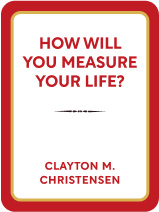

This article is an excerpt from the Shortform book guide to "How Will You Measure Your Life?" by Clayton M. Christensen. Shortform has the world's best summaries and analyses of books you should be reading.
Like this article? Sign up for a free trial here .
What is an emergent strategy? How can an emergent approach in business lead to success? What is the difference between a deliberate and emergent strategy?
An emergent strategy is a business strategy that adjusts as the situation changes. Rather than being static, an emergent approach changes as events unfold. The emergent approach for business is an important tool and you should know when to use one.
Read on to learn more about the emergent approach in business.
The Emergent Approach, Explained
Having an emergent approach has helped businesses achieve great success. The emergent approach is all about observing how the situation changes and how your strategy can adapt to it. This said, you need to know when you should pursue a new option and when you should stick to your original plan instead.
Emergent vs Deliberate Strategies
Once formulated, every strategy continues to evolve in response to options that develop. There are two types of options:
What is a deliberate strategy? Anticipated opportunities are opportunities you identify and choose to pursue. When you create a plan based on opportunities you see, you’re pursuing a deliberate strategy.
What is an emergent strategy? There are a combination of problems and opportunities you run into while implementing your deliberate plan. They essentially compete for resources (money, time, attention) with your deliberate plan. When these unexpected things come up, you must decide whether to stick with the plan, adjust it, or replace it with one of the new options. You may make an outright decision, or an implicit one in which the cumulative impact of daily decisions evolves your strategy. But what is an emergent strategy? A strategy that evolves as the situation changes is called an emergent strategy.
A strategy isn’t static—it continues to develop as events warrant. The trick is deciding when to adjust your original plan and when not to: The new option might sap momentum from your plan while it’s succeeding, or if you’re too focused on your plan even when it’s failing, you could miss out on a better opportunity.
Many companies have succeeded by adopting an emergent approach (and converting it into their deliberate strategy). Walmart is an example: Founder Sam Walton originally planned to build a large store in a city (Memphis). But due to extenuating circumstances, he ended up building it in a smaller town, Bentonville, Arkansas, where he already had another store. This evolved into a strategy of putting big stores in small towns, to forestall competition from other discount retailers.
Honda’s experience introducing motorcycles into the U.S. illustrates in more detail how problems and unanticipated opportunities can change strategy.
Honda Succeeds With an Emergent Approach
In the 1960s, Honda introduced a motorcycle into the U.S. market in an effort to compete with Harley-Davidsons and European imports. But Honda’s bike had expensive mechanical problems (which U.S. dealers lacked the capacity to fix), and it didn’t sell. However, Honda initially stuck to its plan of trying to sell the motorcycle.
Meanwhile, they had shipped some smaller bikes called Super Cubs to the Los Angeles area; these bikes were popular in Japan as vehicles for making deliveries in crowded streets. Honda employees in the U.S. used them the same way at work, but also took them into the hills on weekends for off-road adventures.
This sparked wider interest and demand for the Super Cub as a recreational “dirt bike,” so Honda began importing and selling more of the bikes. Its sales mitigated Honda’s losses on the larger bike, and the company eventually realized selling the Super Cub to a new niche customer—the off-road biker—was a better strategy than selling a large motorcycle.
Ask a Key Question
When you’re open to emergent opportunities, you still need a way to decide when to pursue an option and when to stay the course with your deliberate strategy. The best way is to ask yourself a question when you’re thinking of going a certain direction: What assumptions have to be correct for this course of action to succeed?
In deciding their strategy, businesses rarely ask this question. Instead, they proceed based on initial projections without testing whether the projections are accurate. As they go along, they keep adjusting projections and assumptions to fit what’s happening, getting themselves in deeper when the projections turn out to be off base.
Here’s an example of how this flawed strategy works:
- An employee or team gets an idea for a product or service.
- They come up with a business plan with numbers based on assumptions (guesses).
- They get the go-ahead to proceed, then realize some assumptions are flawed. But they’re too far into the project to change it.
- Further, resources have already been invested and no one wants to tell management assumptions were wrong.
- Things go downhill from there.
Disney’s attempt to launch a theme park near Paris failed because its assumptions about visitor behavior based on the other parks were wrong for the Paris plan. No one asked what assumptions had to be right for the plan to work. A big assumption that turned out to be wrong was that people would book lodging and stay for an average of three days at the park (as they did at other Disney parks), even though the new park had only 15 rides versus 45 at a typical Disney park.
Test Assumptions
Here’s a better way for a company to determine what’s going to work and what isn’t before sinking a lot of money into a project. This is essential for deciding whether to use an emergent approach:
1) Acknowledge that the initial financial projections are iffy. Make a list of the assumptions they’re based on.
2) Ask which have to be right for the projections to pan out. Rank the assumptions by importance and probability—from the most important/least certain to the least important/most certain.
3) Come up with a quick, cheap way to test the most important assumptions.
4) With an understanding of whether the important assumptions are likely to be accurate, the company can decide whether to invest.
With this process, teams focus on what it will take for the projections to be realized, instead of just massaging numbers until they look good.

———End of Preview———
Like what you just read? Read the rest of the world's best book summary and analysis of Clayton M. Christensen's "How Will You Measure Your Life?" at Shortform .
Here's what you'll find in our full How Will You Measure Your Life? summary :
- How economic theories that help businesses succeed can also help individuals make better life decisions
- How to build a career that makes you happy
- How to deepen your relationships with your spouse and children






